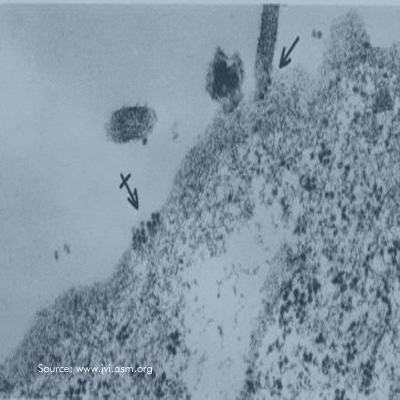| Virus | Minute Virus of Mice |
| Structure | Non-enveloped |
| Genomes | Single stranded DNA |
| Family | Parvoviridae |
| Primary Host | Mice |
| Disease(s) Caused | None |
| Symptoms | None |
| Potential Complications | Possible organ damage if infection occurs in utero or shortly after birth, interference with research |
| Transmission Mode | Contact with nasal secretions and contaminated fomites |
| Sites of Community Outbreaks | Mouse colonies |
Importance of Minute Virus of Mice
Minute virus of mice (MVM) is a small non-enveloped virus belonging to the Parvoviridae family. MVM’s natural hosts are laboratory and wild mice, but experimental infection of rats and hamsters has been successful.
MVM infection does not typically cause symptoms in healthy adult mice. However, infection occuring during fetal development or shortly after birth can result in severe damage to multiple organs.
There are two common strains of MVM: a prototype strain, MVM(p), and an immunosuppressive strain, MVM(I). MVM(p) infects fibroblasts, whereas MVM(I) infects T lymphocytes.
MVM is of special concern for laboratory mouse colonies. Because it is asymptomatic in adults, detecting it is difficult. Infection with MVM(I) will alter T lymphocyte activity, which can potentially interfere with research focusing on the immune system.
MVM has also been shown to have the ability to suppress cancer. MVM replicates most efficiently in cancerous cells, which lack the ability to form a type 1 interferon antiviral response. Infection triggers cell cycle arrest and the DNA damage response pathway, as well as a general host immune response that targets infected cells. These effects of MVM infection can potentially interfere with research that involves tumor formation in mice.
Importance of Disinfection: Survival of Minute Virus of Mice of Surfaces and Potential for Transmission via Fomites
MVM, as with most parvoviruses, is highly contagious and able to persist on environmental surfaces for long periods of time.
MVM is spread primarily through infected urine and feces, as well as nasal secretions. Contact with infected fomites, such as food and water bowls or bedding, can also spread MVM.
As a parvovirus, MVM is resistant to a range of disinfectants. A study showed that at a contact time of 10 minutes, 70% ethanol, 7.5% hydrogen peroxide and 0.05% quaternary ammonium were all ineffective against MVM. MVM was shown to be susceptible to 2% glutaraldehyde, 0.55% ortho-phthaldehyde, 0.2% peracetic acid, and 2500 ppm sodium hypochlorite.
References
- Baker, David G. “Natural pathogens of laboratory mice, rats, and rabbits and their effects on research.” Clinical microbiology reviews 11.2 (1998): 231-266.
- Eterpi, M., G. McDonnell, and V. Thomas. “Disinfection efficacy against parvoviruses compared with reference viruses.” Journal of Hospital Infection73 (2009): 64e70.
- Grekova, Svitlana et al. “Activation of an Antiviral Response in Normal but Not Transformed Mouse Cells: A New Determinant of Minute Virus of Mice Oncotropism .” Journal of Virology 84.1 (2010): 516–531. PMC. Web. 18 Jan. 2016
- Marchini, Antonio et al. “Oncolytic Parvoviruses: From Basic Virology to Clinical Applications.” Virology Journal 12 (2015): 6. PMC. Web. 18 Jan. 2016.

